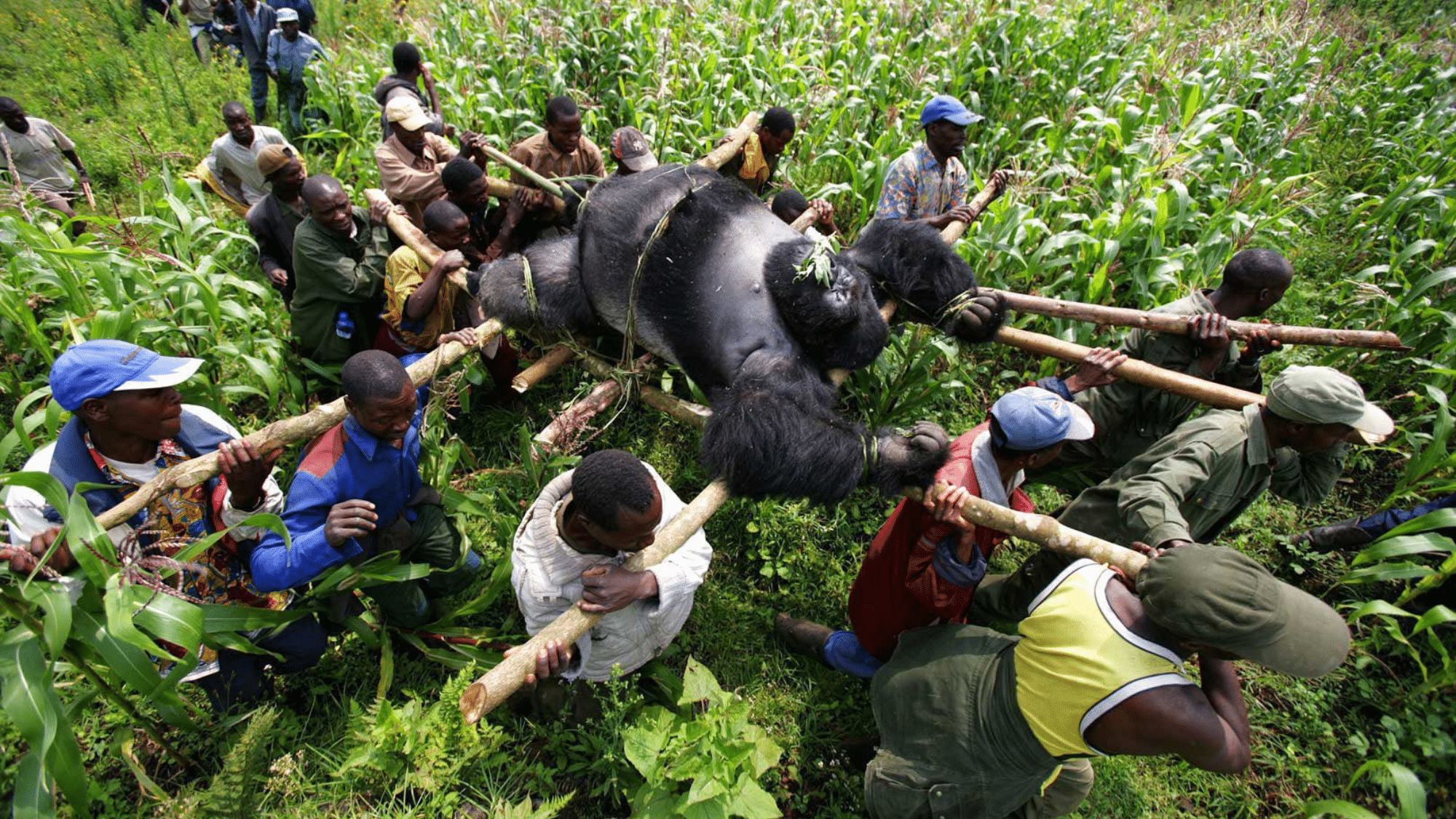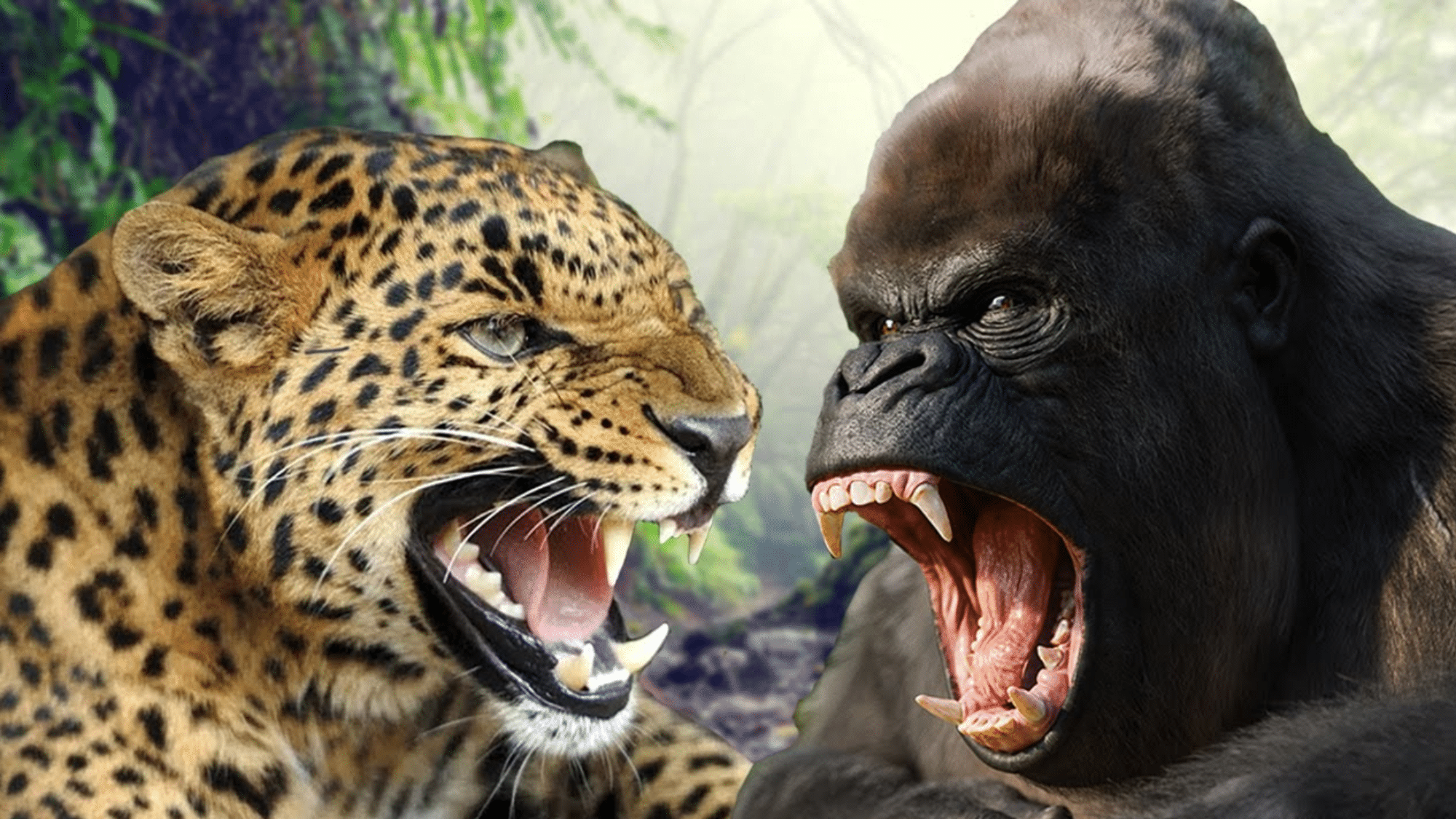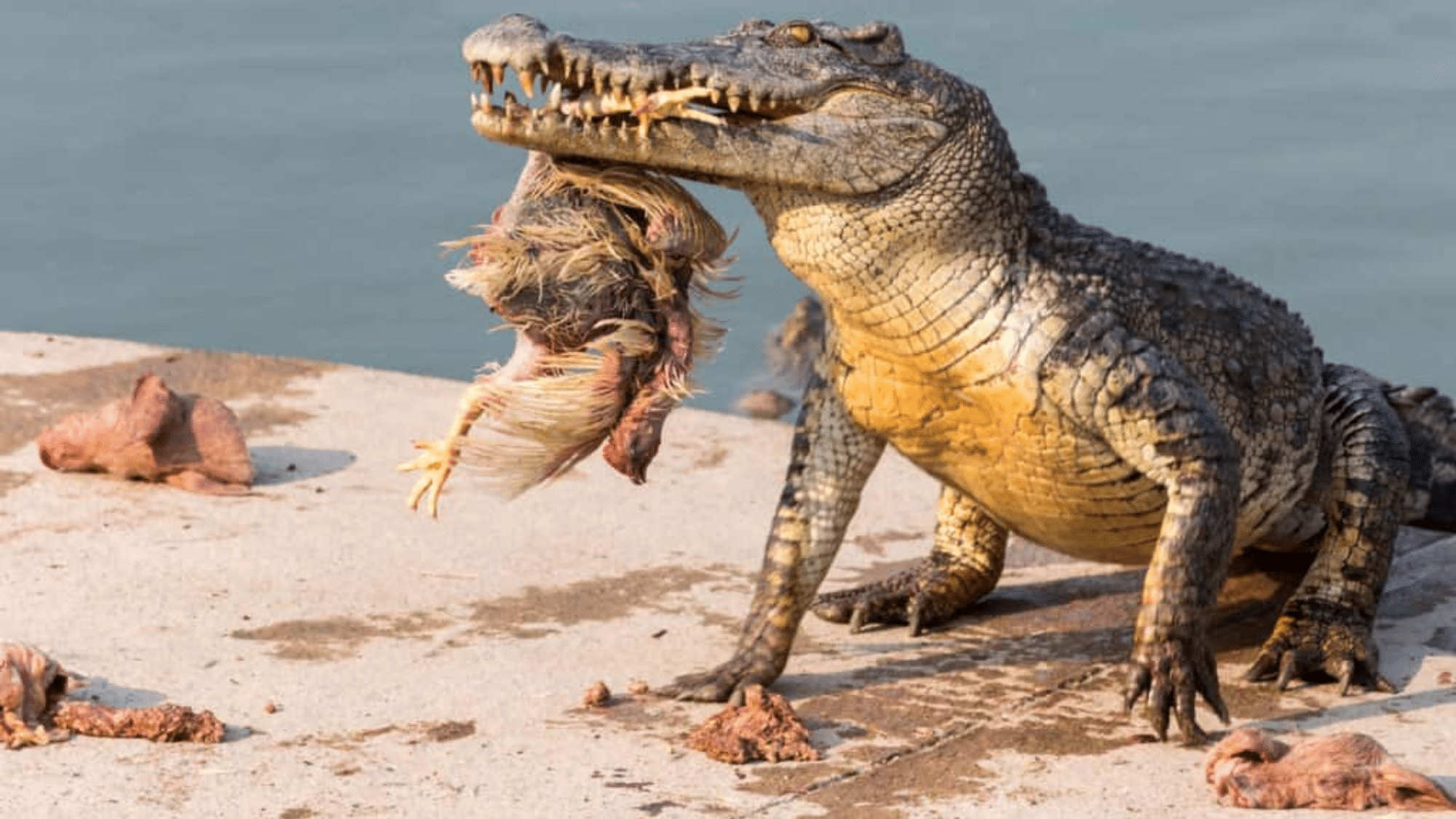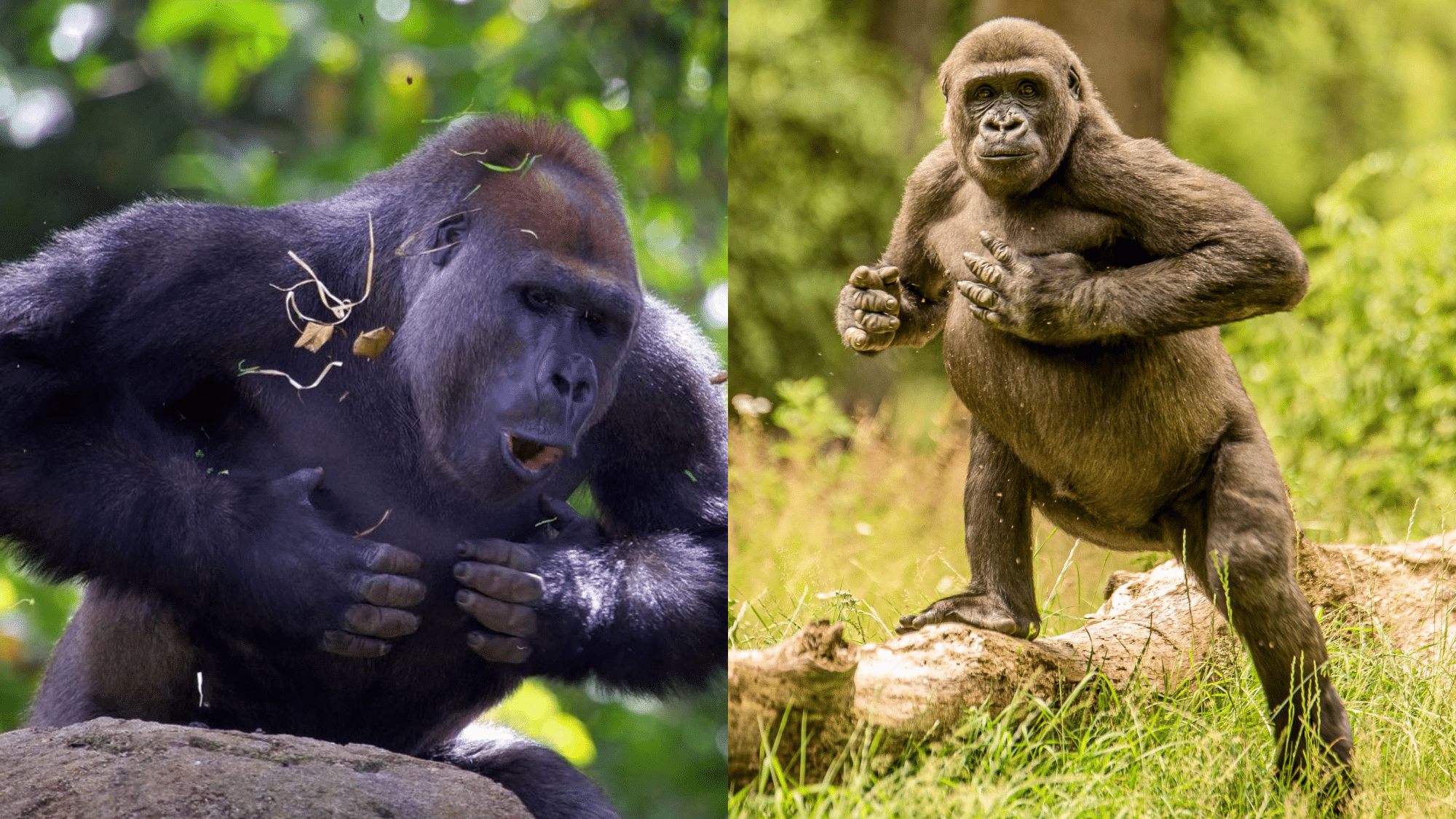Have you ever thought about what animals dare to hunt the mighty mountain gorilla?
Despite their impressive strength and size, these gentle giants still face threats in their misty forest homes.
While few natural predators challenge adult gorillas, certain hunters target infants and weaker individuals, and of course, the most dangerous predator remains humans themselves.
Curious about how these magnificent primates defend against threats and which animals make the surprising list of gorilla predators?
Read on to know the unexpected dangers facing one of our closest wild relatives!
Understanding Mountain Gorilla
Mountain gorillas are endangered primates found only in the misty mountains of East Africa. With fewer than 1,060 individuals remaining in the wild, these magnificent apes face numerous threats but remain tough symbols of conservation success.
Size and Appearance
| Feature | Males (Silverbacks) | Females |
|---|---|---|
| Height | 5.5-6 feet tall | 4-5 feet tall |
| Weight | 300-485 pounds | 150-200 pounds |
| Distinctive traits | Silver-gray saddle of hair across back (develops after age 12) | Darker fur than other gorilla subspecies |
| Body structure | Broad chest, large head with pronounced sagittal crest | Similar but smaller frame |
| Movement | Knuckle-walking on all fours | Knuckle-walking on all fours |
| Hands | Human-like with opposable thumbs | Human-like with opposable thumbs |
| Jaws | Powerful with large molars for plant-based diet | Powerful with large molars for plant-based diet |
Behaviour
Mountain gorillas live in groups of 2-40 members led by a dominant silverback who protects the family and makes key decisions.
Their daily routine includes morning feeding, midday rest, afternoon feeding, and building fresh sleeping nests each night.
They communicate through various vocalizations and body language. Despite impressive displays like chest-beating, they’re generally peaceful unless threatened.
Feeding Habits
- Mountain gorillas are specialized herbivores, not hunters.
- Spend 30-40% of daylight hours feeding.
- Consume up to 60 pounds of vegetation daily.
- Diet includes over 140 plant species.
- Travel 400-1000 meters daily while foraging.
- Silverback determines the group’s travel route.
Predators of Gorillas
Despite their impressive size and strength, mountain gorillas face several threats in their natural habitat, though their list of predators is surprisingly small compared to many other animals.
Humans
Humans represent the most significant threat to mountain gorillas through multiple avenues of predation. Direct hunting for bushmeat, trophies, and the exotic pet trade has historically decimated gorilla populations.
Poachers still set snares targeting other animals that inadvertently trap gorillas, causing injuries or death. Beyond direct killing, human encroachment destroys critical habitat through logging, mining, and agricultural conversion.
Fun fact: A silverback is strong enough to lift up to 1,800 pounds, yet remains defenseless against human firearms.
Leopards
These stealthy big cats occasionally target gorilla infants or weakened individuals separated from their groups.
Leopards typically avoid confrontation with adult silverbacks but may opportunistically attack when they detect vulnerability.
Historical evidence shows leopard predation is rare but does occur, with claw marks found on some gorillas. Infant gorillas are particularly weak during their first years of life.
Fun fact: Gorilla groups will collectively defend against leopard attacks with intimidating displays that include roaring and charging.
Crocodiles
Nile crocodiles present a potential threat when gorillas must cross streams or approach water sources. Though mountain gorillas rarely encounter large crocodiles in their high-altitude habitat, those living at lower altitudes face greater risk.
Crocodiles are ambush predators that could seize a gorilla drinking at a water’s edge or attempting to cross deeper water.
Fun fact: Mountain gorillas are generally excellent swimmers but instinctively avoid deep water bodies.
Mountain Gorilla Threats
Despite their impressive strength, mountain gorillas face numerous threats to their survival.
1. Habitat Loss
The destruction of mountain gorilla habitat continues as forests are cleared for agriculture, livestock grazing, and human settlements.
The high-altitude forests where gorillas live are being fragmented, reducing the available space for these animals that require large territories.
2. Poaching
While rarely targeted directly, mountain gorillas often fall victim to snares set for other forest animals.
Hunters seeking antelope or bush pigs place wire or rope traps that can catch gorillas’ hands or feet, causing severe injuries or death.
3. Civil Unrest
The mountain gorilla’s range spans regions that have experienced significant political instability and armed conflict.
Wars in Rwanda, the Democratic Republic of Congo, and Uganda have disrupted conservation efforts and increased poaching during periods when parks were unprotected.
4. Disease
With genetic makeup similar to humans, mountain gorillas are susceptible to many human diseases while lacking our immunity.
Even common respiratory infections can spread rapidly through gorilla groups with devastating effects.
5. Climate Change
Rising temperatures and changing rainfall patterns threaten the delicate mountain ecosystems where gorillas live.
Their specialized diet and habitat requirements make them particularly vulnerable to climate shifts that affect plant growth patterns.
Defense Mechanisms of Mountain Gorilla
- Intimidating Displays: Mountain gorillas use dramatic chest-beating, roaring, and vegetation thrashing to intimidate predators without physical contact.
- GroupProtection: Silverbacks position themselves between threats and their group members, while females and younger gorillas cluster behind for protection.
- SizeandStrength: A silverback’s immense power—capable of lifting 1,800 pounds—serves as a natural deterrent to most predators in their habitat.
- VocalizationAlerts: Specific alarm calls warn group members of approaching danger, allowing coordinated defensive responses among the entire gorilla family.
- StrategicRetreat: Rather than unnecessary confrontation, gorillas often choose to move their group away from potential threats when detected early.
Interesting Facts About Mountain Gorillas
1. Mountain gorillas share 98% of their DNA with humans, making them one of our closest relatives. They even have unique fingerprints like we do.
2. Each gorilla has a distinctive nose print that researchers use to identify individuals in the wild.
3. Despite eating 60 pounds of plants daily and having strength six times greater than humans, gorillas are generally peaceful.
4. These apes demonstrate complex emotions, including grief and joy, and have been observed caring for disabled group members.
At The End
As we’ve examined, mountain gorillas face a limited but serious set of predators, with humans representing their greatest threat.
Despite their impressive size and strength, these magnificent primates remain helpless to habitat loss, poaching, and disease.
By understanding the complex challenges these endangered animals face, we can better support protection initiatives that ensure these creatures continue to thrive in their mountain forest homes for generations to come.
























